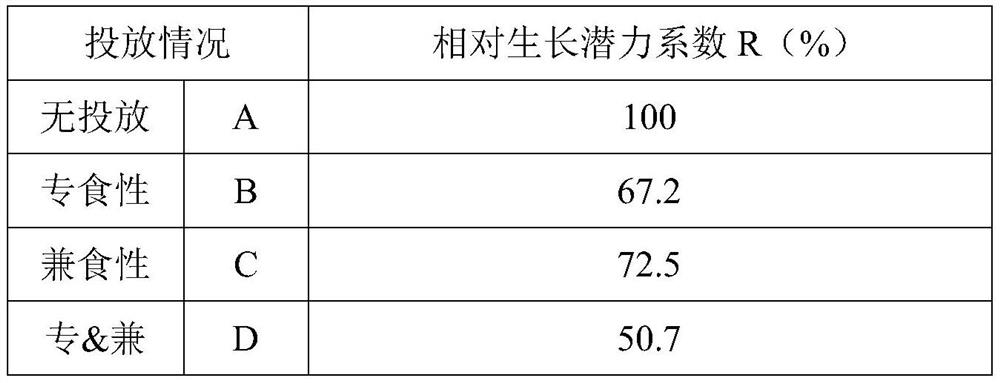Method for controlling alternanthera philoxeroides by using omnivorous insects and/or monophagous insects
A technology for Eclipta philoxeroides and insects is applied in the field of controlling Eclipta chinensis, which can solve the problems of high cost, difficulty in cleaning, environmental pollution and the like
- Summary
- Abstract
- Description
- Claims
- Application Information
AI Technical Summary
Problems solved by technology
Method used
Image
Examples
Embodiment
[0030] The specific test site is: Jiangsu University, Zhenjiang City, Jiangsu Province, and the test plot is a special test site for the School of Environmental and Safety Engineering.
[0031] The present invention replaces and controls the philodendron philodendron by ecological methods, and the specific process is as follows:
[0032] (1) In June, the required experimental materials Eclipta philodendron and two plant-eating insects were obtained from the green area of the campus and the suburbs of the city. multiplication in box;
[0033] (2) Sieve the experimental soil from the green area of the campus, remove the remaining plant roots in the soil, and put it into four hard plastic pots with a diameter of 1m and a height of 0.2m after exposure to the sun;
[0034] (3) carry out further processing with the philodendron chinensis, select the stem of the philodendron philodendron with good growth and uniformity, cut into plant fragments comprising two stem nodes (no term...
PUM
 Login to View More
Login to View More Abstract
Description
Claims
Application Information
 Login to View More
Login to View More - R&D
- Intellectual Property
- Life Sciences
- Materials
- Tech Scout
- Unparalleled Data Quality
- Higher Quality Content
- 60% Fewer Hallucinations
Browse by: Latest US Patents, China's latest patents, Technical Efficacy Thesaurus, Application Domain, Technology Topic, Popular Technical Reports.
© 2025 PatSnap. All rights reserved.Legal|Privacy policy|Modern Slavery Act Transparency Statement|Sitemap|About US| Contact US: help@patsnap.com


